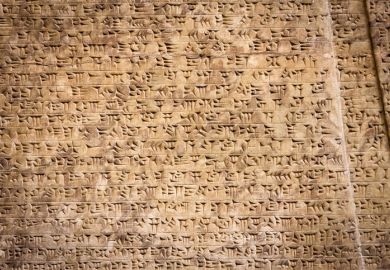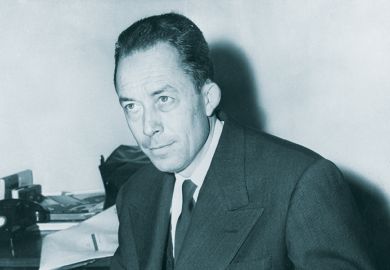The romantic conception of the poet's life as a visionary struggling with forces of mediocrity and misunderstanding finds an early 20th-century American manifestation in Hart Crane. He embodied the possibilities and anxieties of a dynamic, uncertain age, redefining itself as fast as the skyline of Manhattan took shape.
Crane, who from his window stared across the Brooklyn Bridge at the metropolis, sought more than just the celebration of novelty and change. His verse strove to capture the imagistic threads that link past time, that of America and its inhabitants, with the momentum of the present. As Paul Mariani notes, his subject is to be found somewhere between T. S. Eliot and Walt Whitman, an individual who speaks of himself and of everything past and present that has gone into him.
Sadly, alongside his rich, allusive, challenging poetry, Crane was a self-destructive, self-pitying individual. The man who wrote so much of the value of love and memory was often too unpredictable to interact with those whose support could have stabilised him.
He had a high turnover rate in friendships and a problematic, argumentative relationship with his parents. He was a promiscuous, homosexual alcoholic - perhaps not an easy man to understand. The extent to which the reader can sympathise with him will be that to which they prefer the excesses of Rimbaud and Whitman to the reserve of Eliot. If any American writer of the early 20th century fits the tortured, self-destructive mould, it is Crane.
He emerges from these pages as a man driven by the desire to be not just a poet, but the poet of his time. However, his intense relationship with his parents, his love life, which left him forever suspended between emotional peace and the drive of lust, alcoholism and depression, all contrived to deny him the stability he sought.
Despite his stated intention to capture the constant momentum of the modern age as a positive force, and thereby counter Eliot's bleaker prognosis, his life remained chaotic, and much of his energy was dissipated before it could reach the page. Like his constant source of inspiration, the city of New York, he drew people in then repelled them, burning up the very material he needed to work into his poetry.
Mariani, a poet and biographer also of John Berryman, Robert Lowell and William Carlos Williams, sees in Crane a particular significance. As a New Yorker, he is familiar with the metropolis that dominates Crane's verse, an understanding of which brings as much to the rhythms and imagery of The Bridge as scholarly analysis. He resists the temptation completely to eulogise his difficult subject, although the level of feeling with which he argues Crane's world view often veers towards an attempt at justification.
The first biography of Crane for 30 years, Mariani's work draws upon a range of previously suppressed letters and manuscripts. This is a partisan biography, but written with scholarly attention, grounding the poetry within the life. It should receive an audience among those interested in Crane's status in American verse and those interested in the confused lives that are often transmuted into enduring art.
Peter Lowe is a postgraduate research student in English studies, University of Durham.
The Broken Tower: A Life of Hart Crane
Author - Paul Mariani
ISBN - 0 393 04726 1
Publisher - Norton
Price - £24.50
Pages - 492
Register to continue
Why register?
- Registration is free and only takes a moment
- Once registered, you can read 3 articles a month
- Sign up for our newsletter
Subscribe
Or subscribe for unlimited access to:
- Unlimited access to news, views, insights & reviews
- Digital editions
- Digital access to THE’s university and college rankings analysis
Already registered or a current subscriber? Login



